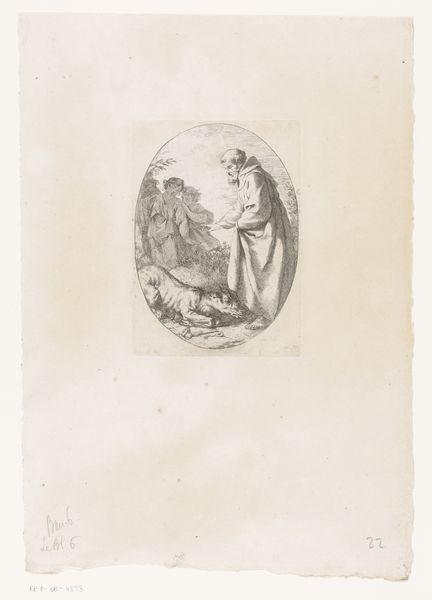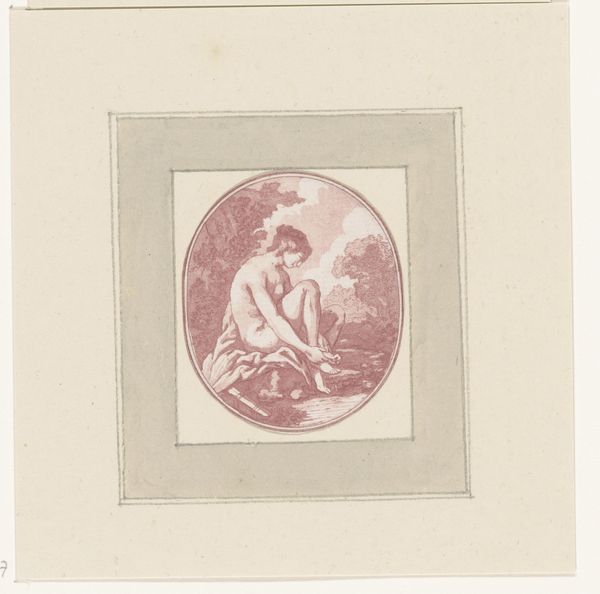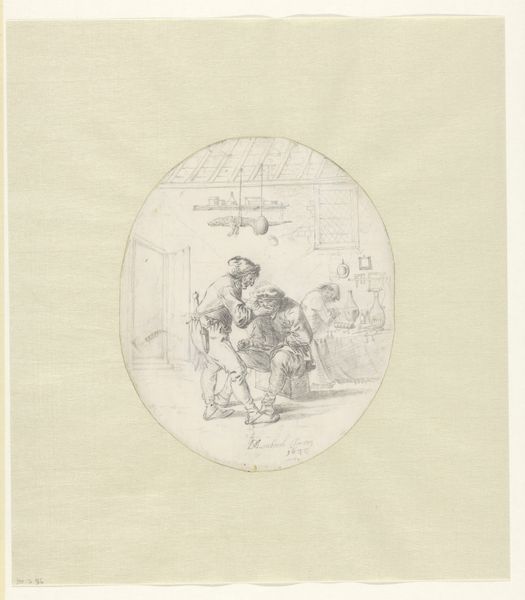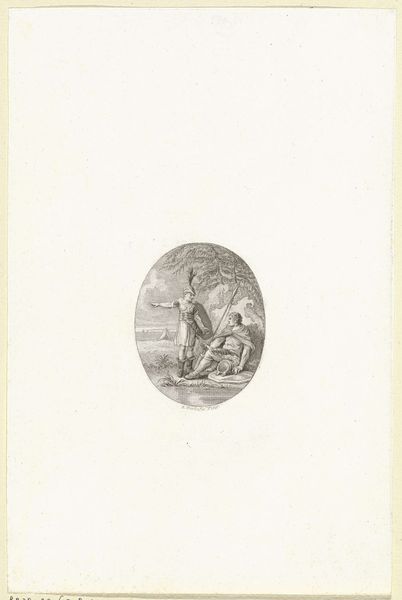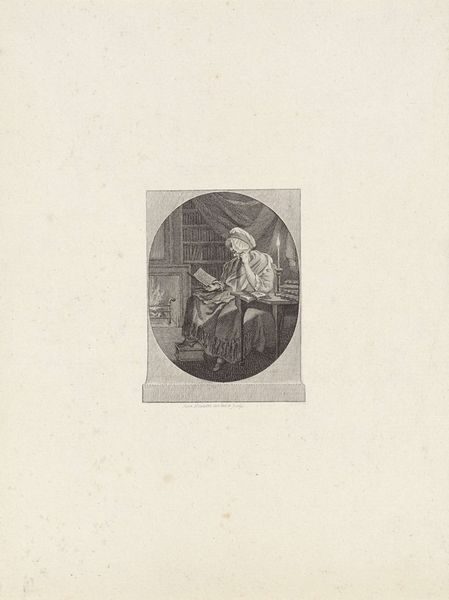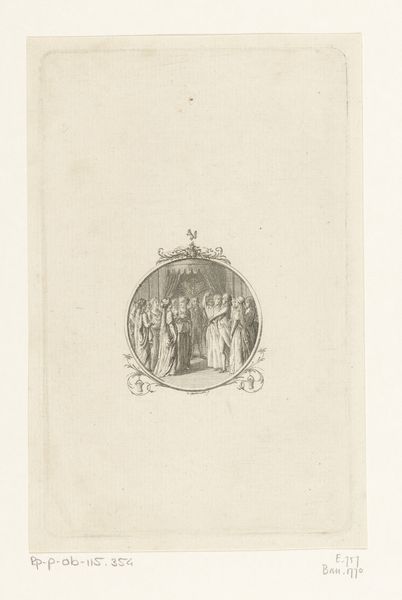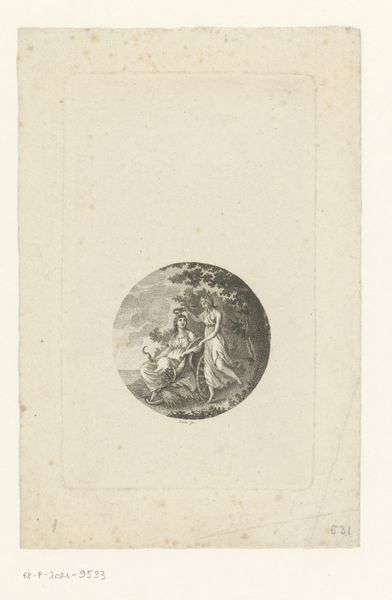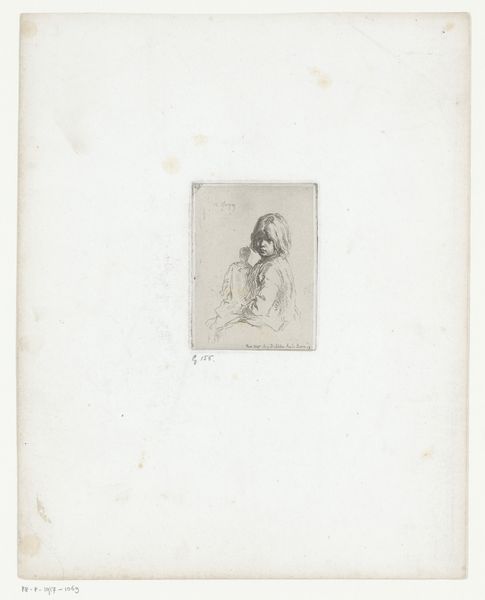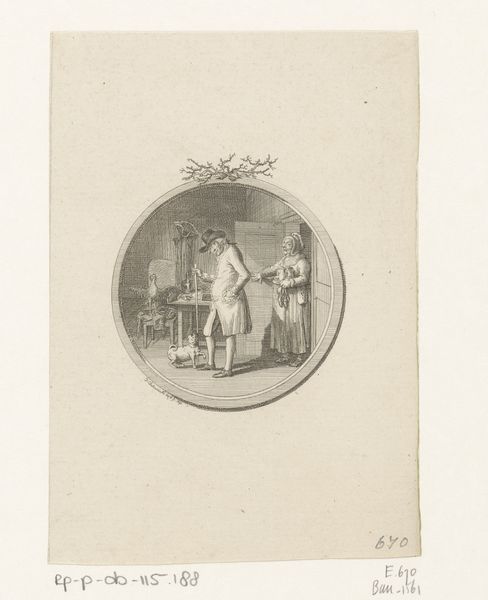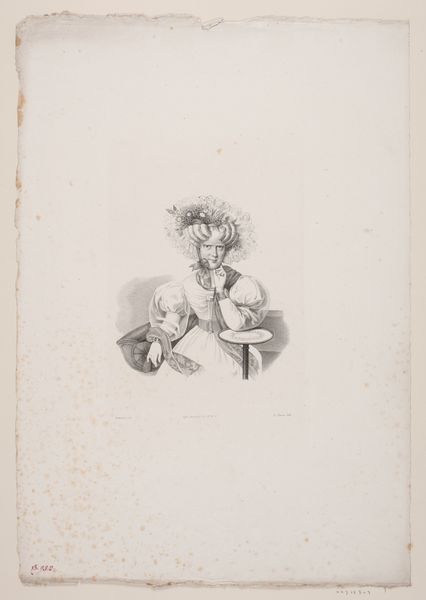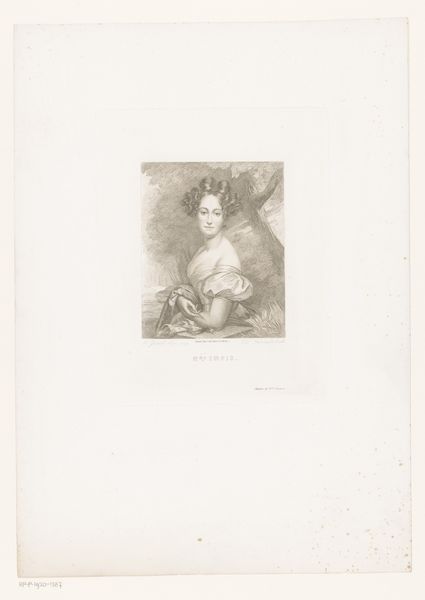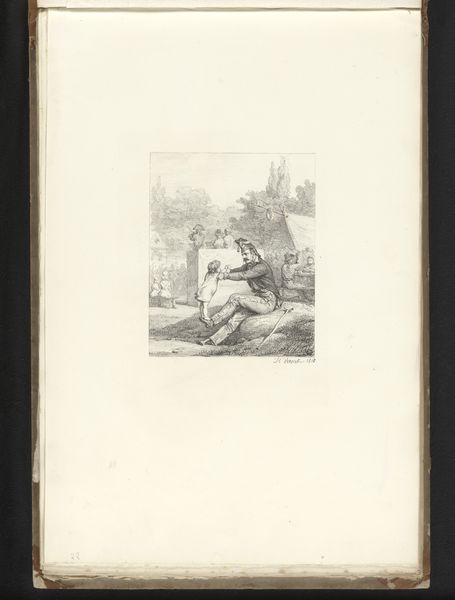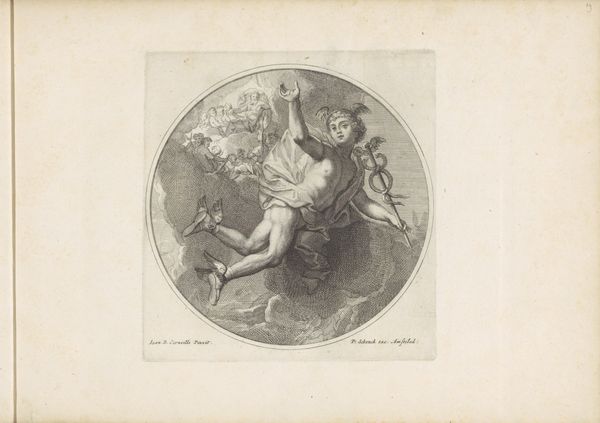
drawing, pencil
#
portrait
#
drawing
#
dutch-golden-age
#
pencil
#
genre-painting
Dimensions: height 184 mm, width 155 mm
Copyright: Rijks Museum: Open Domain
Curator: This is Michiel D. van Limborch's drawing, "Pijprokende man aan een tafel," or "Man Smoking a Pipe at a Table," created around 1648. What's your first impression? Editor: Somber. The grey pencil lends a melancholic air. It’s formally simple, yet that central figure has a captivating gravity. Curator: The subject offers insights into Dutch Golden Age society. Tobacco use was expanding; pipes and related objects were increasingly part of material culture. It indicates global trade and consumption patterns in a domestic context. Editor: Agreed. The lines! Look how Limborch uses the simplicity of line to suggest volume and light. Note, too, the considered placement within that oval frame; it gives a classical touch to such a down-to-earth scene. Curator: Right, let’s also remember the practicalities of producing such a work. The paper itself would have been a commodity. Consider too how drawings acted as studies. How does the method inform the composition? Editor: Precisely. You notice the economical strokes—swift indications of form. And the hatching that creates shadows implies an attention to form. What meaning can be created by use of an exact mark. It shows Limborch considered structure to create depth. Curator: What about that second figure, the one slightly out of focus? And the items displayed on the table. What can this teach us about domestic social behaviours? Editor: Indeed. Consider this work as more than just a window onto a moment but one made with precise skill and aesthetic choices. That choice of medium is important. Curator: Thanks, with that in mind, next time you find yourself smoking at a table, perhaps reflect on these broader social histories and formal choices we discussed! Editor: Yes! A great way to connect not only artist to canvas but history to the contemporary moment. Thank you.
Comments
No comments
Be the first to comment and join the conversation on the ultimate creative platform.
